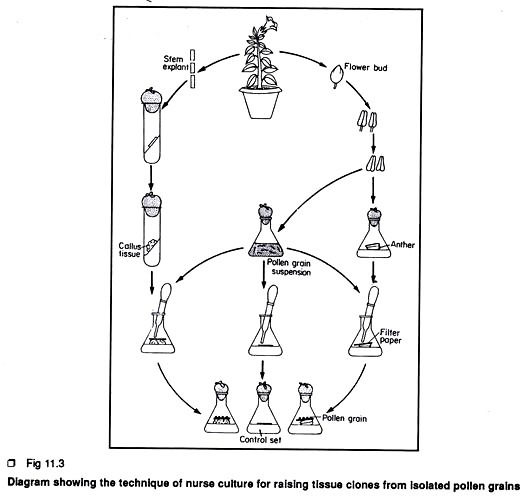In this article we will discus about the blood group alleles in man.
The ABO blood group system in man provides an excellent illustration of a multiple allelic system. If blood from two persons is allowed to mix outside the body, sometimes it will mix well, at other times there is clumping (agglutination) of red blood cells. The reason for this was explained by K. Landsteiner in 1900.
He took blood samples from different people, separated their red cells from the colourless serum or plasma, and then mixed them up in various ways. He found that the red cells derived from one sample would mix smoothly with the serum of the same person.
But when red cells of one person are mixed with the plasma of another person, sometimes the two would mix well, at other times there would be clumping of red cells. On the basis of these reactions Landsteiner discovered four blood types in man, namely A, B, AB and O.
Later on Landsteiner found that human erythrocytes carry on their surface two distinct types of proteinaceous antigens A and B which can stimulate the production of specific antibodies. Persons with type A blood have the A antigen (also called agglutinogens), type B persons have B antigen, while persons with AB blood have both A and B antigens.
Blood type O persons have neither A nor B antigen. These antigens stimulate production of specific serum antibodies (agglutinins) when human blood is injected into an animal such as the rabbit or guinea pig. There are also natural antibodies in the blood so that persons with type A blood have anti-B antibodies, and B group persons have anti-A antibodies.
Blood of AB type does not have antibodies in its plasma. Persons with O type blood have both anti-A and B antibodies and are often called universal donors as they can donate blood to persons of A, B and AB types. The occurrence of natural antibodies in human blood remains a scientific curiosity which research has not been able to explain so far.
Bernstein in 1924 found that the blood group antigens are controlled by an autosomal gene designated I (iso-haemaglutinin) which has 3 alleles IA, IB and IO. Allele IA produces type A blood and is dominant over the allele IO which in the homozygous state (IOIO) produces type O blood.
An A type individual can have the genotype IAIA or IAIO. Similarly allele IB produces blood group B, and is dominant over the allele IO. An individual with blood group B may be homozygous IBIB or heterozygous IBIO. AB type persons have the genotype IAIB where both alleles are co-dominant and equally expressed.
Serologically, blood group A is distinguishable into two subgroups A and A2. The number of blood groups therefore increases to 6—A1, A2, B, A1B, A2B and O. The genes controlling blood groups contain information for certain characteristics of the sugar molecule present along with glycoprotein on the surface of the erythrocyte. The sugar molecule determines antigenic specificity. The immunologically active components of both A and B contain 5 identical sugars.
Of these D galactose and N-acetyl-D-galactosamine occupy terminal positions of the carbohydrate chains in A and B components respectively. These two sugar molecules differ from each other only at the position of carbon No. 2 which in D galactose is occupied by a hydroxyl group, and by N-acetyl-amino group in the sugar N-acetyl-D-amino-galactosamine.
This difference in the arrangement of atoms at the position of the second carbon in the sugar molecule is responsible for A and B antigenic specificities. The blood group genes are inherited in the Mendelian fashion in the case of A, B and O groups. The AB group however, results from co-dominance of A and B alleles.
Thus blood groups of offspring can be determined from their parent’s genotypes in the following way:
